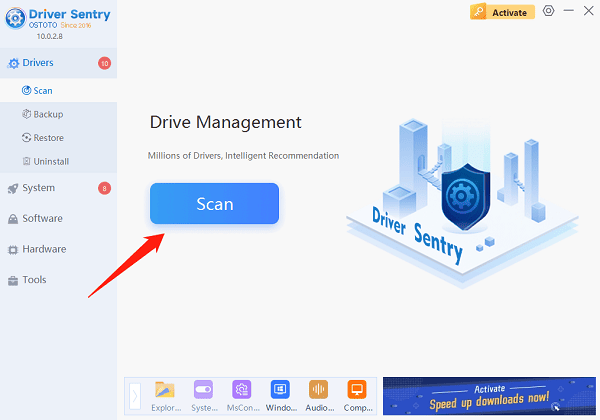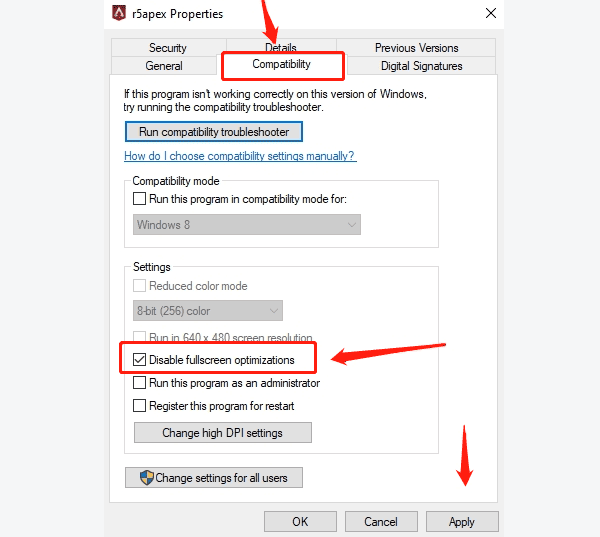
Some players may experience lag while playing Apex Legends, which can disrupt gameplay and affect enjoyment. This article offers several solutions to help improve performance and restore smooth gameplay.
1. Minimum System Requirements
OS: 64-bit Windows 10
Processor: AMD FX 4350 or Equivalent, Intel Core i3 6300 or Equivalent
Memory: 6 GB RAM
Graphics: AMD Radeon™ HD 7730, NVIDIA GeForce® GT 640
DirectX: Version 11
Network: Broadband Internet connection
Storage: 75 GB available space
Additional Notes: ~3.8GB for 1 localized language
2. Update Graphics Drivers
Updating your graphics drivers can significantly improve game performance and stability. If your graphics driver is outdated or corrupted, it may cause Apex Legends to lag. It's recommended to use Driver Sentry to automatically detect and update drivers, saving time and avoiding the risk of downloading or installing incorrect drivers.
Click the download button to get the latest version of Driver Sentry. After installation, open the software and click "Scan".

Once the scan is complete, it will show any outdated or missing drivers. Find the graphics driver in the list and click "Upgrade".
After the update, restart your computer to ensure the new driver takes effect.
3. Install the Latest Game Patch
Open Steam or Origin client.
Locate Apex Legends in your library.
Right-click the game and select "Check for Updates" or "Properties".
If a patch or update is available, the system will automatically download and install it.
4. Verify Game File Integrity
Steam:
Open the Steam client.
Right-click Apex Legends in your Library and select "Properties".
Click the "Local Files" tab and select "Verify Integrity of Game Files".

Wait for Steam to check and fix any files.
Origin:
Open the Origin client.
Right-click Apex Legends in "My Game Library" and select "Repair".
Origin will automatically check and repair any corrupted or missing files.
5. Check Apex Servers
If Apex Legends won't start or you experience connection issues, it might be due to server downtime. You can check the official Apex Legends website or relevant social media channels for any server maintenance or outage information.
6. Optimize Network Connection
Ensure you have sufficient network bandwidth, avoiding large file downloads or other bandwidth-heavy activities during gameplay.
If possible, use an Ethernet connection instead of Wi-Fi, as wired connections are more stable and reduce latency and disconnections.
Close other applications that may consume bandwidth, such as video streaming or download managers.
If multiple devices are sharing the same network, avoid heavy traffic to reduce network congestion.
7. Disable Full-Screen Optimization
Right-click the Apex Legends shortcut icon and select "Properties".
Under the "Compatibility" tab, check "Disable Full-Screen Optimization".

Click "Apply" and then "OK".
Restart the game and check if the issue is resolved.
8. Adjust Game Settings
Launch Apex Legends and go to the "Settings" menu.
In the "Video Settings" section, lower the following options:
Resolution: Set to a lower resolution (e.g., 1080p or lower).
Texture Quality: Set to low or medium.
Anti-Aliasing: Disable or set to the lowest setting.
Shadows: Disable or set to the lowest.

Ensure "V-Sync" and "Frame Rate Limit" are disabled to reduce performance bottlenecks.
9. Reinstall the Game
Open Steam or Origin client.
Find Apex Legends in your library or "My Game Library".
Right-click the game and select "Uninstall".
After uninstalling, download and reinstall Apex Legends.
By following these steps, you can effectively resolve issues with Apex Legends not starting or running slowly. If the problem persists, it is recommended to contact EA technical support for further assistance.
See also:
How to Fix the Keyboard Not Typing Issue
How to Fix Mouse Double-Click Issue